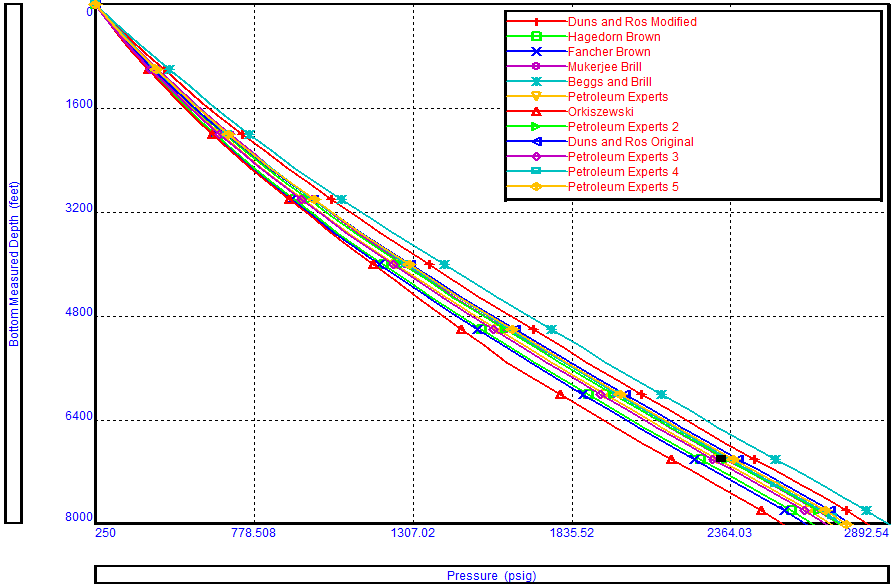There is no universal rule for selecting the best flow correlation for a given application. When an outflow performance simulator is used, it is recommended that a Correlation Comparison always be carried out. By inspecting the predicted flow regimes and pressure results, the User can select the correlation that best models the physical situation. Refer to the article titled “Multiphase flow correlations” for more details about flow correlations and their use.

Fancher and Brown is a no-slip correlation, with no flow regime map. Therefore, this correlation cannot be recommended for general use and should not be used for quantitative work. on the other hand, Duns and Ros Modified gives the highest pressure drops in the slug flow regime for oil wells. This is why Fancher Brown (no slip) and Duns and Ros Modified can serve only as quality check boundaries for downhole measurements.
Hagedorn & Brown has been traditionally used for vertical wells and Beggs & Brill for deviated wells. Duns & Ros is often recommended for high GLR wells.
The University of Tulsa has compared the correlations using their well data database. They have found that when Hagedorn & Brown’s test data is included, that correlation works best in almost all cases, including deviated wells. The Beggs & Brill and Mukherjee and Brill correlations did not perform very well even for deviated wells. The Ansari mechanistic model was a close second to Hagedorn & Brown.
The correlation you should use is the correlation that works best for your well. The only way to be certain which correlation to use is to do a history match of your well or of a similar well in the same field. The correlations can give widely varying results and selection of the proper correlation can be extremely important.
One important consideration when selecting a flow correlation is that there is no guarantee an empirical correlation will give any kind of a reasonable answer outside the range of data the correlation is based upon. A given correlation may work very well in the range of conditions similar to the data the correlation is based upon but fail completely if they are extended beyond that range (larger tubing diameter or annular flow for example).





